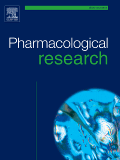
“The endocannabinoid system comprises cannabinoid receptors 1 and 2 (CB1 and CB2), their endogenous ligands, anandamide (AEA) and 2-arachidonoylglycerol, and metabolic enzymes of these ligands.
The endocannabinoid system has recently been implicated in the regulation of various pathophysiological processes of the skin that include immune competence and/or tolerance of keratinocytes, the disruption of which might promote the development of skin diseases.
Recent evidence showed that CB1 in keratinocytes limits the secretion of proinflammatory chemokines, suggesting that this receptor might also regulate T cell dependent inflammatory diseases of the skin.
In this article, we sought to investigate the cytokine profile of IFN-γ-activated keratinocytes, and found that CB1 activation by AEA suppressed production and release of signature TH1- and TH17-polarizing cytokines, IL-12 and IL-23, respectively. We also set up cocultures between a conditioned medium of treated keratinocytes and naive T cells to disclose the molecular details that regulate the activation of highly proinflammatory TH1 and TH17 cells.
AEA-treated keratinocytes showed reduced an induction of IFN-γ-producing TH1 and IL-17-producing TH17 cells, and these effects were reverted by pharmacological inhibition of CB1.
Further analyses identified mammalian target of rapamycin as a proinflammatory signaling pathway regulated by CB1, able to promote either IL-12 and IL-23 release from keratinocytes or TH1 and TH17 polarization.
Taken together, these findings demonstrate that AEA suppresses highly pathogenic T cell subsets through CB1-mediated mammalian target of rapamycin inhibition in human keratinocytes.
Thus, it can be speculated that the latter pathway might be beneficial to the physiological function of the skin, and can be targeted toward inflammation-related skin diseases.”
https://www.ncbi.nlm.nih.gov/pubmed/27694494




